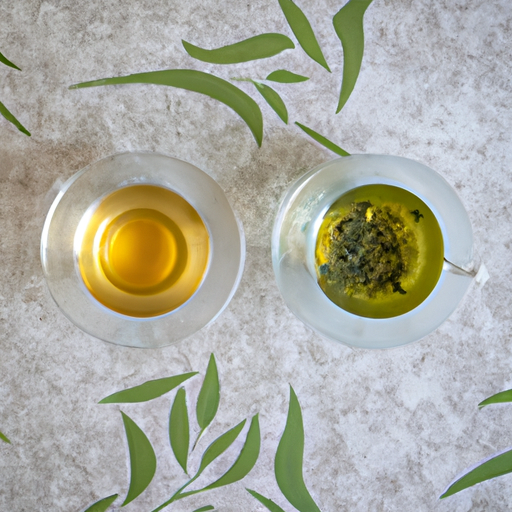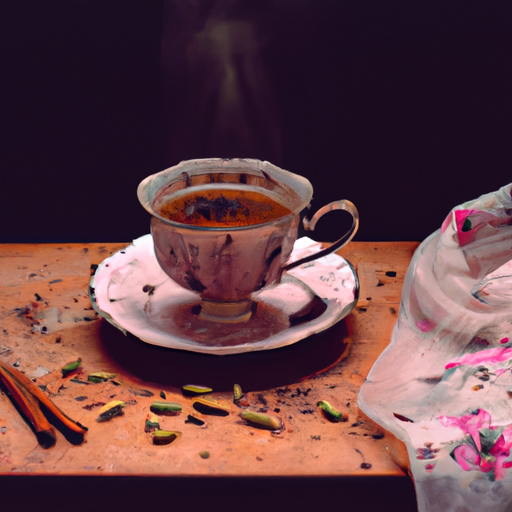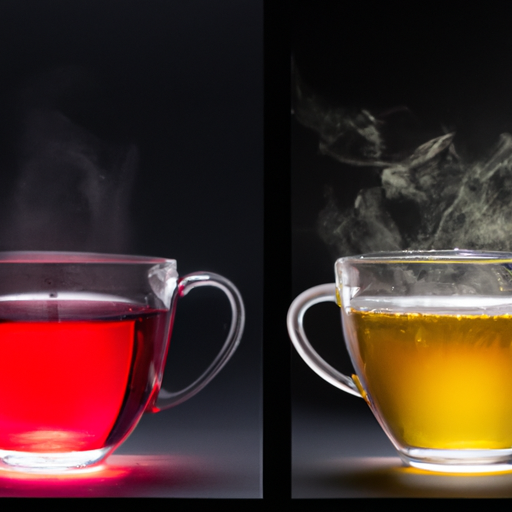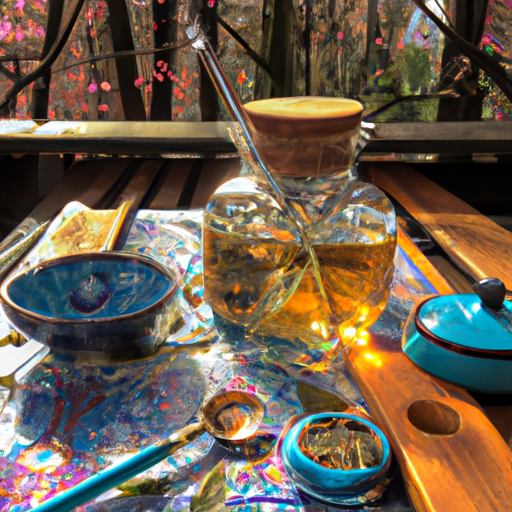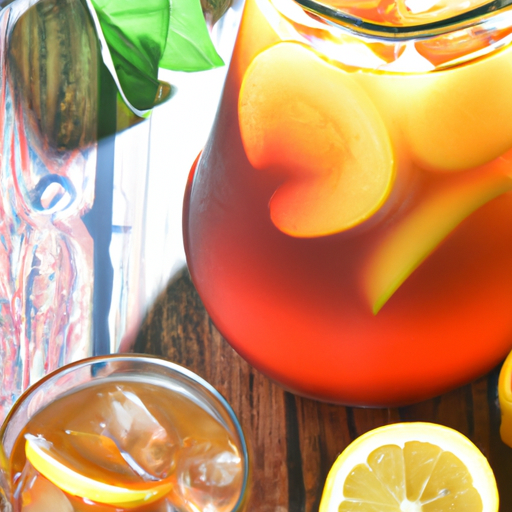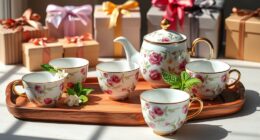Tea lovers, gather round! Today, we embark on a journey of taste and discovery as we delve into the captivating world of white and green tea.
Picture this: you’re sitting in a cozy café, contemplating your tea selection. Do you go for the delicate and subtly sweet white tea, or the vibrant and refreshing green tea? The choice may seem daunting, but fear not, for I am here to guide you through the nuances of these two intriguing brews.
While both white and green tea hail from the same Camellia sinensis plant, their paths diverge during processing and harvesting. White tea, oh so minimalistic, is plucked in the spring and early summer, boasting a taste reminiscent of hay, fresh spices, and a hint of sweetness.
On the other hand, green tea undergoes a more intricate process, allowing for a plethora of flavors to emerge – from vegetal and nutty to smoky and toasty.
But taste is just the beginning! These teas offer a treasure trove of health benefits, thanks to their abundant antioxidants, particularly catechins. In this article, we will unravel the nutritional composition and explore the potential health advantages that both teas have to offer.
So, grab your favorite teacup and join me on this enlightening journey as we uncover the differences between white and green tea. Prepare to be amazed by the intricate artistry of tea-making and the myriad of benefits that await.
Let the tea showdown begin!
Key Takeaways
- White tea and green tea are made from the same plant, but undergo different levels of processing.
- White tea is typically harvested in spring and early summer, while green tea can be harvested in autumn as well.
- White tea can sometimes have higher caffeine content than green tea.
- Both white tea and green tea contain high amounts of antioxidants and offer health benefits.
Taste and Flavor
I find it interesting that white tea is often described as having a taste of hay, freshness, light sweetness, and spiciness, while green tea is described as being vegetal, fresh, lightly sweet, smokey, nutty, and toasty.
These descriptions provide a glimpse into the distinct flavor profiles of white tea and green tea. White tea, with its minimal processing, showcases a delicate flavor that is reminiscent of hay and freshness, with a subtle sweetness and a hint of spiciness.
On the other hand, green tea, which undergoes more processing, offers a complex taste experience. It is characterized by its vegetal notes, refreshing quality, mild sweetness, and hints of smokiness, nuttiness, and toasty undertones.
These differences in taste and flavor make white tea and green tea unique and appealing to different palates.
Processing and Harvesting
Harvesting and processing methods greatly impact the unique characteristics and flavors found in these two distinct types of tea. White tea is known for its minimal processing, which involves withering and drying the leaves. This gentle processing method helps to preserve the delicate flavors and aromas of the tea. Green tea, on the other hand, goes through more processing steps such as steaming or pan-firing to halt oxidation, rolling to shape the leaves, and drying. These techniques give green tea its distinct vegetal and grassy flavors. Additionally, the harvesting seasons also differ between white and green tea. White tea is typically harvested in spring and early summer, while green tea can also be harvested in autumn. This seasonal availability can contribute to variations in taste and aroma. Overall, the processing techniques and seasonal availability play a crucial role in shaping the characteristics of white and green tea.
| Processing Techniques | Seasonal Availability |
|---|---|
| Minimal processing | Spring and early summer |
| Steaming or pan-firing, rolling, drying | Spring, summer, and autumn |
Health Benefits and Nutritional Value
Analyzing the nutritional value of white and green teas reveals the potential health benefits they offer. Both teas are rich in antioxidants, which play a crucial role in protecting the body against oxidative stress and reducing the risk of chronic diseases. However, the antioxidant content may vary between the two teas.
Comparing antioxidant content:
-
White tea is known to have a higher antioxidant content than green tea. This is because white tea undergoes minimal processing, preserving more of its natural antioxidants, such as catechins and polyphenols.
-
Green tea also contains significant amounts of antioxidants, but its processing method, which involves steaming or pan-firing the leaves, may slightly reduce its antioxidant levels.
Exploring the impact on weight management:
- Both white and green teas have been associated with potential weight management benefits. The catechins present in these teas have been found to aid in boosting metabolism and promoting fat oxidation, potentially supporting weight loss efforts.
Overall, both white and green teas offer valuable health benefits due to their antioxidant content. Their impact on weight management is an additional advantage worth considering.
Frequently Asked Questions
What are the differences in caffeine content between white tea and green tea?
In terms of caffeine content, white tea can sometimes have more caffeine than green tea. However, the exact amount can vary depending on factors such as the specific tea variety and brewing method used.
How do the brewing techniques for white tea and green tea differ?
The brewing techniques for white tea and green tea differ in terms of water temperature and steeping times. White tea requires hotter water and shorter steeping times compared to green tea, resulting in distinct flavor profiles for each.
Are there any specific health benefits associated with white tea or green tea?
White tea and green tea both offer specific health benefits. White tea is known for its high antioxidant content, which may help reduce the risk of chronic diseases. Green tea, on the other hand, contains catechins that have been linked to weight loss and improved heart health.
Can you provide information on the specific antioxidants found in white tea and green tea?
White tea and green tea have different specific antioxidant profiles. White tea contains higher levels of catechins and flavonoids, while green tea is rich in epigallocatechin gallate (EGCG). These antioxidants contribute to the health benefits of each tea.
Are there any notable differences in the nutritional composition of dried tea leaves compared to tea infusions?
The nutritional differences between dried tea leaves and tea infusions are notable. When comparing the antioxidant content of white tea and green tea, there may be variations due to the different processing methods and brewing techniques used.
Conclusion
After delving into the world of white and green tea, it’s clear that these two tea types offer distinct tastes, flavors, and health benefits.
While white tea boasts a hay-like freshness with a touch of sweetness and spice, green tea takes on a more vegetal and toasty profile.
The differences in processing and harvesting also contribute to these disparities.
Both teas, however, shine in terms of their high antioxidant content, with catechins taking the lead.
So, whether you’re a tea enthusiast or simply looking for a healthy beverage option, both white and green tea have something unique to offer.
Sip on and enjoy the tea showdown!

